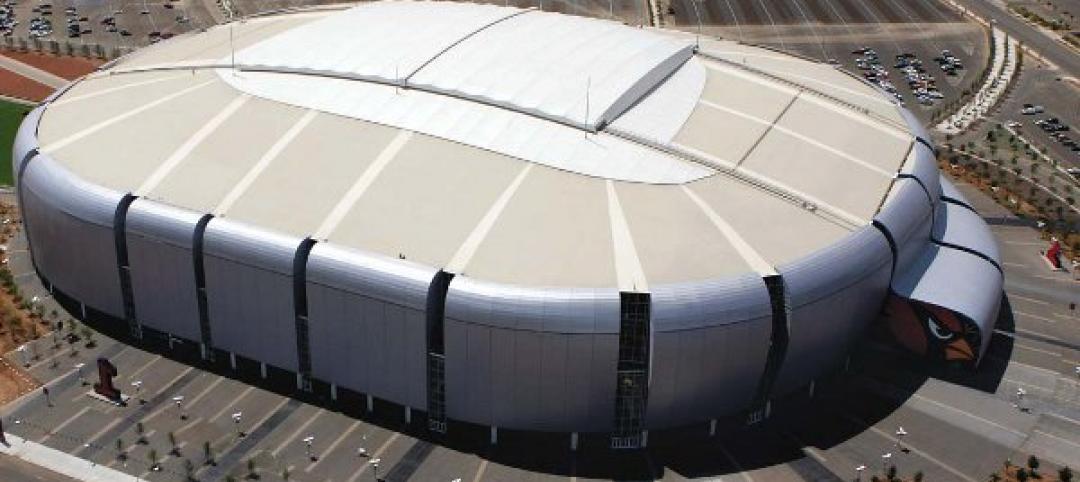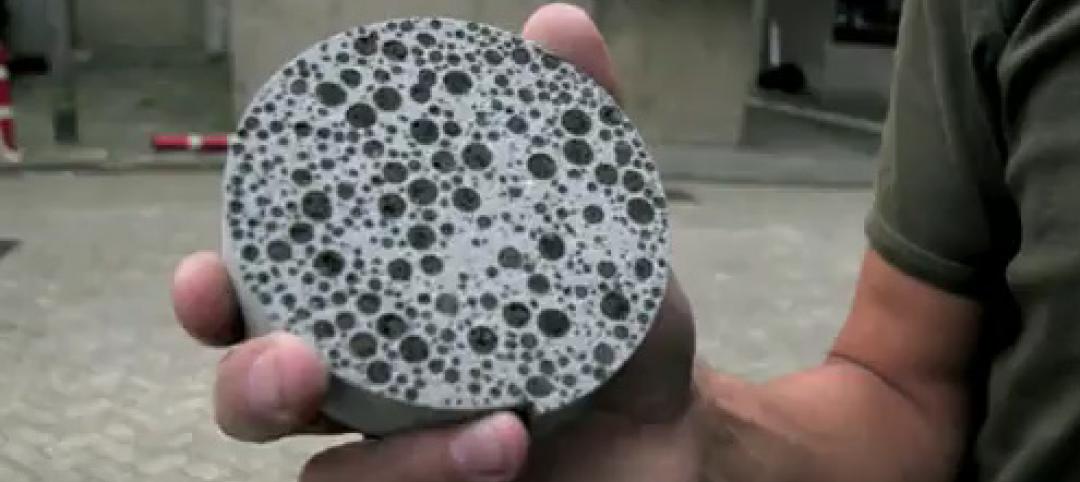Building Teams need to bring real value to the table these days, so BD+C asked two expert engineers about steel construction and their tips for cutting costs when building with structural steel. Meet the experts:
Tabitha Stine, SE, PE, LEED AP, Director of Technical Marketing, American Institute of Steel Construction, Chicago
David Ruby, PE, SE, SECB, FASCE, Chairman and Founding Principal, Ruby+Associates Inc. Structural Engineers, Detroit
1. Use standard steel lengths.
Specifying standard steel lengths rather than specialty sizes seems like a no-brainer, but it's too often ignored, says AISC's Stine. For instance, ordering 20 20-foot sections is significantly less expensive than ordering 10 20 1/2-foot sections because it eliminates having to cut to size, scrapping extra steel, and paying for unusable remnants.
Stine says she often hears the argument that specifying 20 standard sections rather than 10 specialty sections will add costs by increasing an order's weight. However, less weight doesn't always mean less cost. Stine says ordering standard sizes, repeating sizes (which allows the fabricator to order larger quantities), and bundling orders usually leads to cost savings.
To save more, Stine suggests talking to your fabricator about:
- Current market conditions, and whether it's cheaper to order one size over another.
- Remnant material from another job that the fabricator may be happy to unload at a good price.
- What sizes the mills have been rolling recently: higher stock quantities generally mean lower prices.
Ruby recalled a conversation he had with the fabricator working with him on St. Vincent Hospital in Toledo, Ohio. The owner came in with last-minute design modifications that would have required changes to the structural steel package.
Ruby and the fabricator put together an order of standard sizes based on material availability that enabled the design to be reconfigured without adding to the cost of the steel.
2. Don't pay for primed or painted steel.
Steel doesn't need to be primed or painted unless it's going be used as an exposed architectural element (in, say, an atrium), exposed to the elements (as in a parking garage), or set in a corrosive environment (e.g., a chemical manufacturing plant). Not only does priming and painting add unnecessary costs, it can hinder fire protection by making it difficult for fireproofing materials to adhere to the steel.
Recommendation: Make sure your bids explicitly state no primer or paint; otherwise, they may be added to the package, says Stine. That's because steel naturally develops slight amounts of rust on a job site; even though the rust will not affect the structural integrity of the steel, it is viewed as unaesthetic, so the steel gets painted. Remember, the rust can be brush cleaned-in fact, connections must always be cleaned, notes Stine.
Priming and painting can increase steel costs enough to flip the project to another material that appears to be cheaper. "It isn't simply painting costs," says Ruby. "It's also resource costs, inconvenience costs, and environmental costs. It's a much larger picture."
3. Use a BIM model to save money-but only if everyone on the team in on board.
Building Teams can find big savings by having a BIM model, especially for identifying design conflicts before they become big problems. The BIM model can also be shared with fabricators who would otherwise be forced to pass along the costs of creating their own model. According to Stine, most AEC firms currently utilize BIM only on their biggest projects, but she advocates using BIM on all jobs, regardless of size. Architects and engineers who can't deliver a BIM model to the fabricator will fall behind, she says, especially during an economic slowdown where increased competition forces everyone to be more aggressive.
Caution: The entire Building Team needs to be involved in the BIM model for it to become an integral part of the process, warns Ruby. He sees structural engineers as relatively BIM-savvy compared to many contractors, especially smaller GCs working on smaller projects. If contractors aren't contributing their experience to the model, it's not going to be as valuable to the fabricator, says Ruby.
4. Make sure fabricators are certified.
Project costs can be reduced by specifying steel from fabricators who are certified rather than simply relying on steel to be inspected. Certification focuses on the entire process of fabrication and erection. Certified companies providing steel adhere to a set of AISC standards (which are audited by a third party), a process that weeds out problems before the steel gets to the job site. Better to nip any problems in the bud that to correct them after the fact, which adds time and expense to the project.
5. Know the details of what you're buying. On average, says the AISC's Stine, the total cost of structural steel represents about 10% of overall project costs; of that, the material itself accounts for 20-40%, while the other 60-80% goes to fabrication and erection. Thus, if structural steel prices were to go up 5%, the cost of the entire steel package would increase only about 1-2%.
6. Understand how to fireproof steel cost-effectively.
Reasonably priced options for achieving required fire-protection ratings include:
- Spray-applied fireproofing. Surface prep time is minimal; steel only needs to be shop cleaned of dirt, oil, grease, and loose mill scale.
- Gypsum board. A relatively inexpensive way to fireproof steel because the cost to upgrade conventional gypsum board to fire-resistant gypsum board is quite low.
- Intumescent paints provide low weight-per-surface-area, high durability, and good adhesion. But aesthetic appeal is the main reason for selecting intumescent paint, which is often used on architecturally exposed structural steel.
7. Don't be deceived by "low-cost" deals.
Don't make decisions on steel packages based solely on lowest cost, says Ruby. That relegates steel to the role of commodity when it should be viewed as a specialty, owing to the structural engineering, fabrication, and installation knowledge required.
Moreover, so-called "lowest cost" isn't always the case. Building Teams that see steel as a specialty item and work with fabricators to optimize a steel package (as noted above) can realize significant cost savings. When steel is viewed as a commodity, Building Teams may miss the opportunity to create a leaner, more efficient, and often less expensive steel package.
Ruby mentions a project he consulted on for Lansing (Mich.) Community College. When the job went out to bid with the steel packaged as a commodity, it came back over budget. When Ruby helped optimize the steel program, making significant modifications to the lateral system, floor system, and metal deck, the project came back under budget-and with an option for an additional floor, at no extra cost.
Related Stories
| Mar 29, 2013
GAF offers commercial property owners up to $500 off first service visit
GAF, North America’s largest roofing manufacturer, knows that regular maintenance is critical for maximizing the life expectancy of every commercial roof. The recently enhanced WellRoof® Plus Program makes it easy and rewarding for commercial property owners to establish a roof maintenance program with a GAF Certified Maintenance Professional (CMP), who can exclusively offer this program.
| Mar 29, 2013
Stanford researchers develop nanophotonic panel that reflects sun's heat out of the atmosphere
Researchers at Stanford University have developed a nanophotonic material that not only reflects sunlight, but actually beams the thermal energy out of the earth's atmosphere.
| Mar 21, 2013
Turner report: Construction costs up slightly in first quarter
Turner Construction Company announced that the First Quarter 2013 Turner Building Cost Index – which measures costs in the non-residential building construction market in the United States – has increased to a value of 849. This reflects a 1.19% increase from the Fourth Quarter 2012 and a 3.41% increase from the First Quarter 2012.
Building Enclosure Systems | Mar 13, 2013
5 novel architectural applications for metal mesh screen systems
From folding façades to colorful LED displays, these fantastical projects show off the architectural possibilities of wire mesh and perforated metal panel technology.
| Feb 26, 2013
Southern Pine Inspection Bureau publishes new design values effective June 1
New design values for all sizes and grades of visually graded Southern Pine dimension lumber were published in the Southern Pine Inspection Bureau’s (SPIB) Supplement No.13 to the 2002 Standard Grading Rules for Southern Pine Lumber on Feb. 11.
| Feb 26, 2013
ANSI standard for interior doors open for second public ballot
WDMA I.S.6A-11, Industry Standard for Interior Architectural Wood Stile and Rail Doors and WDMA I.S.1A-11, Industry Standard for Interior Architectural Wood Flush Doors, are now open for their second ballot for recognition as American National Standards.
| Feb 22, 2013
Dutch team's 'bioconcrete' can heal itself
Two researchers from Delft Technical University in Holland have developed a self-healing cement that can stop microcracks from forming in concrete.
















